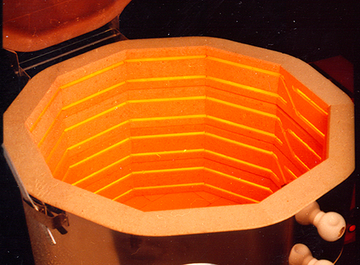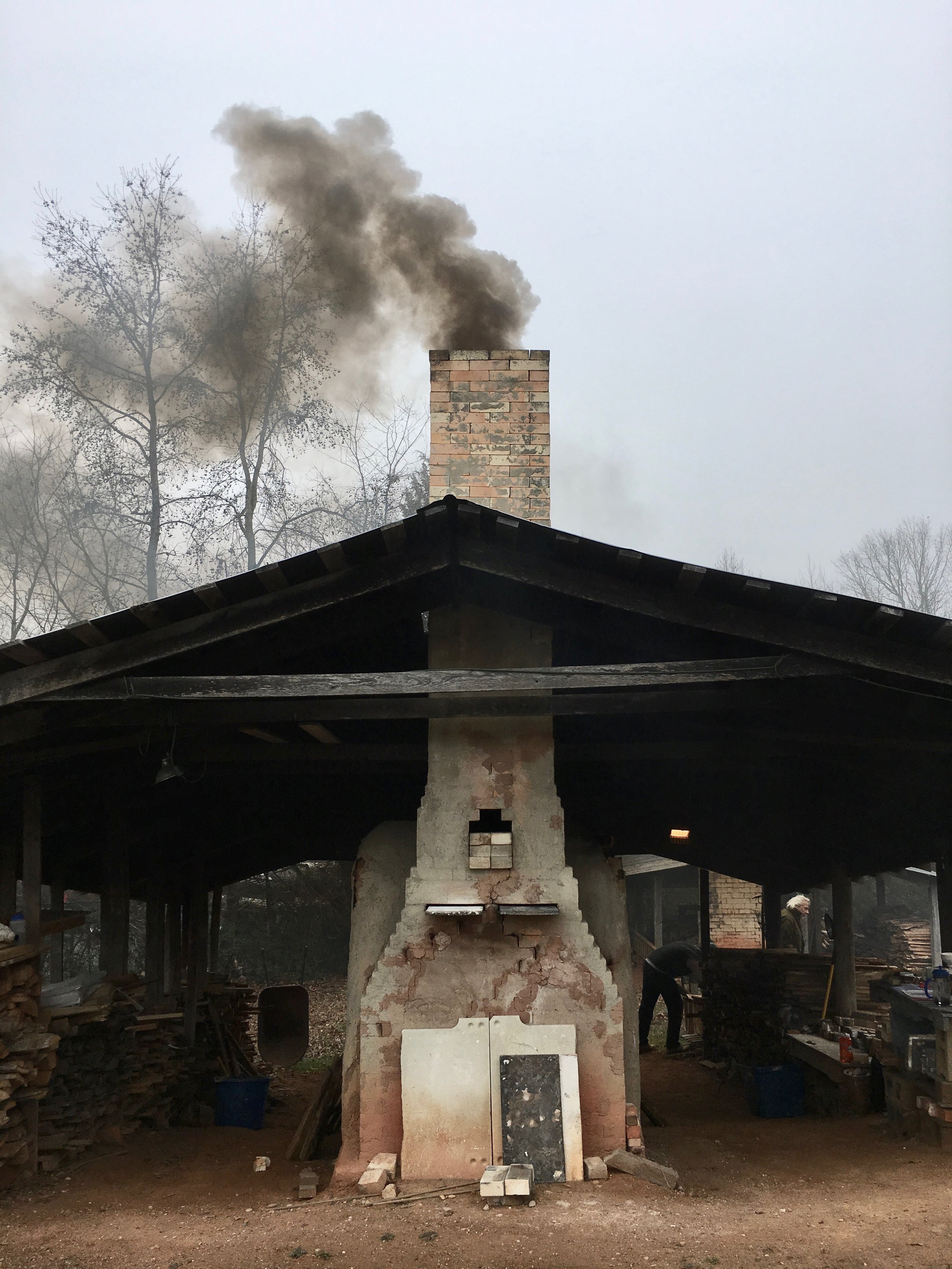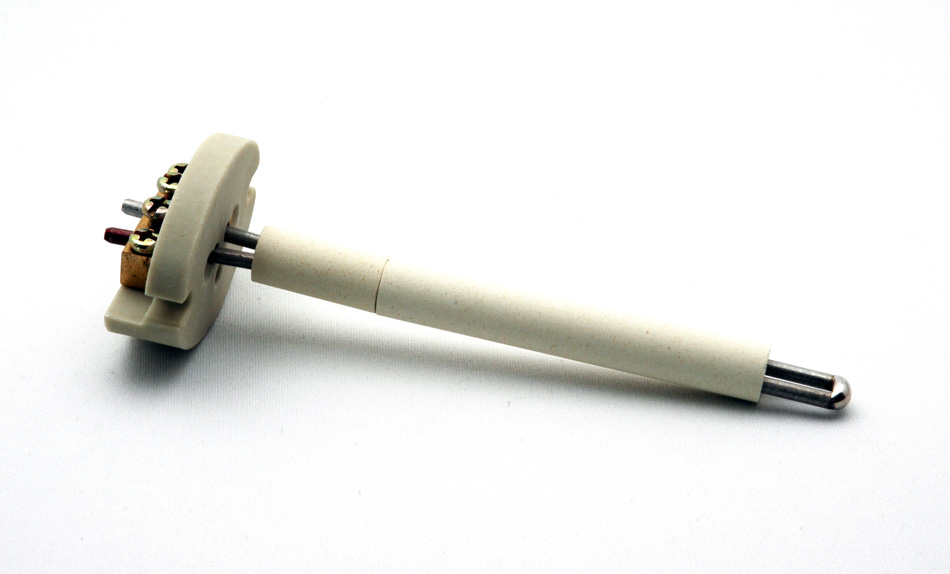Electric kilns are heated by these coil like wires.

What are elements?
Gas kilns are called gas kilns because....?
What is " they are kilns fueled from gas?"
The flue leads to this. This also shares the name with the thing that emits smoke from a fireplace in a household. 
What is a chimney?
Any water in the clay body that is not a part of the chemical composition of the clay molecule. It is also known as the “water of plasticity”.
What is physical water?
Earthenware clay is bisqued and glaze fired to cone____.
What is Cone 04?
Temperature in computerized kilns is measured by this.

What is a thermocouple?
Gas kilns are heated by these fuel heated devices.

What are burners?
This part of the kiln cuts across the chimney and can be opened and closed to control the flow of air through the kiln.

What is the damper?
The CHEMICAL WATER is driven off between these temperature.
I will take a 20 degree difference.
The CHEMICAL WATER is driven off between 660 - 950 degrees F (350 - 500 degrees C)
Stoneware and Porcelain clays have a maturing temperature of either cone __ or cone __.
Extra 100 pts each: Cone 6 and Cone 10 are this temperature in Fahrenheit.
What is cone 6 or cone 10?
Cone 6: 2232
Cone 10: 2345
True or false? Electric kilns have pre-programmed firing profiles for any cone temperature but cannot be programmed manually to a custom firing.
What is false. Electric kilns have pre-programmed firing profiles for any cone temperature AND can be programmed manually to a custom firing for any cone temperature.
True or false: Gas kilns can only be fired in a reduction atmosphere.
What is false? Gas kilns can be fired in reduction AND oxidation.
The holes in which the flames enters the kiln through and circulate through the firing chamber.
What are the burner ports?
Quartz Inversion happens during the heating and cooling stage of the firing. The quartz in the clay body expands and shrinks by approximately ___%.
What is 2%?
Cones are used to quantify the amount of heat delivered by a kiln. Cones are made from recipes of ceramic materials and minerals tuned to make them bend gradually through a target temperature range. These are called ____________ cones.
What are pyrometic cones?
The electric kiln has a temperature measuring device, that senses the temperature of the kiln.
What is the pyrometer?
Name the kiln.
:max_bytes(150000):strip_icc()/updraft-56a7646d5f9b58b7d0ea0de7.jpg)
What is an updraft gas kiln?
This part of the gas kiln exists on either side of the firing chamber, that separates the firing chamber from the area in which you stack the ceramics.
What are the bag walls?
At this stage any organic material in the clay body burns out of the clay between 1292 degrees F and 1652 degrees F (700 - 900 degrees C) or about cone 018 to cone 09.
What is Oxidation of Impurities?
Cone packs generally consist of there cones: One is the cone to let you know you are nearing your peak temperature, one is to indicate your goal temperature, and one is to make sure you do not over fire the kiln. Identify the specific name for each one. (100 points each, if you can name all 3 you get the full 400 points)

What is the guide cone, firing cone, guard cone?
Electric kilns can only fire in this atmosphere.
What is oxidation?
Complete the sentence: All of the gas kilns we use at UNL are ______draft kilns with _______ burners
What is "All of the gas kilns we use at UNL are downdraft kilns with forced air burners"?
The area of a gas kiln where the gas exits the kiln and leads to the chimney.

What is the flue?
INITIAL/PARTIAL VITRIFICATION begins at 1472 degrees F or cone 015. At this point the lower temperature fluxes in the clay body begin to melt. In a bisque firing, we don’t want the clay to become too vitreous for this specific reason.
What is we want it to remain porous enough to accept the glaze?
In a reduction atmosphere, the ______ in the clay changes composition (losing some of its oxygen) and becomes darker in color. The colorants in the glazes are also affected by reduction. Many of them change color in a reduction atmosphere. The glaze itself also bubbles more as it melts in a reduction atmosphere, giving richer more varied surfaces.
What is iron?